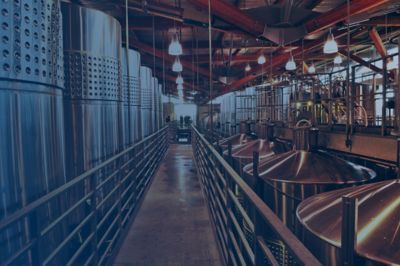Wine making is an art that dates back centuries, but in the modern age, science and technology have revolutionised the industry. One crucial aspect of this transformation is the use of nitrogen blanketing, a process that plays a pivotal role in preserving the flavour, quality, and shelf life of wines. In this post, we'll explore the concept of nitrogen blanketing, its significance in wine production, and how it benefits winemakers and consumers alike.
The Basics of Nitrogen Blanketing
Nitrogen blanketing, also known as nitrogen purging or inert gas blanketing, is a technique widely used in various industries, including winemaking. It involves the introduction of nitrogen gas into a closed container (such as a wine storage tank) to displace or "blanket" the air inside. The purpose of this process is to create an atmosphere devoid of oxygen, which is a gas that can have detrimental effects on wine quality.
Oxygen and Wine: A Detrimental Duo
Oxygen is wine's nemesis. When wine comes into contact with oxygen, a series of chemical reactions occur that can lead to undesirable outcomes, such as oxidation and spoilage. Here's why oxygen is the enemy of wine:
- Oxidation: Oxidation is the process by which compounds in wine react with oxygen, leading to the breakdown of delicate aromas and flavours. The result is a wine that tastes flat and stale.
- Microbial Spoilage: Oxygen provides a breeding ground for harmful microorganisms like acetic acid bacteria, which can convert alcohol into acetic acid, causing the wine to turn vinegar-like.
- Color Change: Oxygen exposure can lead to the browning of white wines and the darkening of red wines, which is an unappealing sight for consumers.
- Loss of Freshness: The vibrant fruit characteristics that make wine enjoyable can dissipate quickly in the presence of oxygen, leaving the wine tasting tired and lackluster.
Nitrogen to the Rescue
Nitrogen, an inert gas that makes up a significant portion of Earth's atmosphere, is the ideal solution to combat the detrimental effects of oxygen in the wine making process. When winemakers introduce nitrogen into wine storage tanks or other containers, it effectively pushes the oxygen out. This creates a protective barrier, preventing the wine from coming into contact with oxygen and thus preserving its integrity.
Benefits of Nitrogen Blanketing in Wine Making
Preservation of Flavour and Aroma:
Nitrogen blanketing helps retain the fresh, vibrant flavours and aromas that are characteristic of high-quality wines. By minimising oxygen exposure, winemakers can ensure that the wine tastes as intended, with no undesirable oxidative notes.
Extended Shelf Life:
Wines that have undergone nitrogen blanketing have a longer shelf life. Consumers can store these wines for an extended period without worrying about them going bad or losing their appeal.
Consistency:
Maintaining a consistent product is crucial in the wine industry. Nitrogen blanketing helps winemakers produce batches of wine that taste and smell the same, providing a reliable product for consumers.
Reduction in Sulfur Usage:
To counteract the effects of oxygen exposure, winemakers often use sulfur dioxide as a preservative. Nitrogen blanketing reduces the need for excessive sulfur additions, resulting in wines that are lower in sulfites, which can be beneficial for consumers with sensitivities.
Cost-Efficiency:
While the initial investment in nitrogen blanketing equipment may be significant, the long-term cost savings are substantial. Wineries can reduce losses due to spoilage and ensure a consistent product, ultimately increasing their profitability.
Implementing Nitrogen Blanketing in Wineries
The process of nitrogen blanketing in wineries involves several key steps:
Equipment Installation:
Wineries must install nitrogen blanketing equipment, including nitrogen tanks and a delivery system, which may include pipes, valves, and monitoring devices. The system must be designed to fit the specific needs and scale of the winery.Controlled Atmosphere:
Winemakers carefully monitor and control the nitrogen flow to create the desired atmosphere inside storage tanks or barrels. Oxygen levels are regularly measured to ensure they remain at minimal levels.Tank Blanketing:
For wine storage tanks, winemakers connect the nitrogen supply to the tank's headspace, allowing the gas to displace the oxygen. This process is typically done during the racking or transfer of wine.Barrel Blanketing:
For wine aging in barrels, winemakers can insert nitrogen wands or use other methods to blanket the barrels with nitrogen gas. This protects the wine inside the barrels from oxygen exposure.Monitoring and Maintenance:
Regular monitoring and maintenance of the nitrogen blanketing system are essential to ensure its effectiveness. Any leaks or equipment malfunctions must be promptly addressed.
Conclusion
Nitrogen blanketing is a vital tool in the winemaking industry, helping winemakers protect their precious creations from the harmful effects of oxygen. By preserving the flavour, quality, and shelf life of wines, nitrogen blanketing ensures that consumers can enjoy wines that reflect the winemaker's vision. As wineries continue to embrace this technique, we can expect even more exceptional wines to grace our glasses, enhancing our appreciation of this timeless beverage.




